News - October 2015 RSS Feed
-
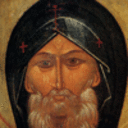 Father of Western MonasticismRead More
Father of Western MonasticismRead More
Anthony was born at Coma, near Heracleopolis Magna in Fayum, about the middle of the third century. He was the son of well-to-do parents, and on their death, in his twentieth year, he inherited their possessions. He had a desire to imitate the life of the Apostles and the early Christians, and one day, on hearing in the church the Gospel words, "If thou wilt be perfect, go and sell all thou hast", he received them as spoken to himself and devoted himself exclusively to religious exercises. -
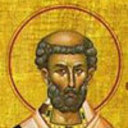 Doctor of the ChurchRead More
Doctor of the ChurchRead More
Augustine was born at Tagaste on November 13, 354. Tagaste, now Souk-Ahras, about 60 miles from Bona (ancient Hippo-Regius). Although eminently respectable, his family was not rich, and his father, Patricius, one of the curiales of the city, was still a pagan. However, the admirable virtues that made Monica the ideal of Christian mothers at length brought her husband the grace of baptism and of a holy death, about the year 371. -
 Counselor and HealerRead More
Counselor and HealerRead More
His parents, Christopher and Diana, were slaves who had been taken from Africa to Sicily. Benedict was granted his freedom at age 18 but remained as an employee of his former master. Scorned and mocked by others as poor as himself, due to his origin and skin, he retained a natural cheerfulness. He met with and became enamored of a group of Franciscan hermits near Palermo. Benedict sold what little he had, gave away the money to the poor, and joined this group. -
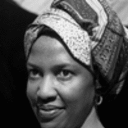 Educator & Advocate for Intercultural AwarenessRead More
Educator & Advocate for Intercultural AwarenessRead More
Sister Thea Bowman is the first African-American woman to receive a Doctorate in Theology from Boston College. Sr. Thea was born in the small rural town of Canton in Central Mississippi. Her grandfather was a slave; her father was a physician and her mother, a teacher. In 1965, Sr. Bowman received a B.A. in English, Speech, and Drama from Viterbo College in La Crosse, Wisconsin. In 1969, she received an M.A. in English and in 1972, a Ph.D. in English Language, Literature, and Linguistics; both degrees from The Catholic University of America in Washington, D.C. -
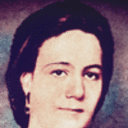 Foundress, Sisters of the Holy FamilyRead More
Foundress, Sisters of the Holy FamilyRead More
Born in 1812, Henriette Delille was a real-life person like you and me. She was born a free woman of color and lived her life in New Orleans, Louisiana. Henriette was surrounded by family and friends. Among Henriette's relatives was her great, great grandmother who was a slave from West Africa. Her mother and the other women in her family followed the plaçage system. This means colored women "in concubinage" with wealthy white men. In recent findings, in funeral records, though unsubstantiated, Henriette may have given birth to two sons who died before the age of three. -
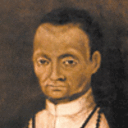 Patron of Interracial HarmonyRead More
Patron of Interracial HarmonyRead More
Saint Martin de Porres was a lay brother of the Dominican Order who was beatified in 1837 by Pope Gregory XVI and canonized in 1962 by Pope John XXIII. He is the patron saint of mixed-race people and all those seeking interracial harmony. He was noted for work on behalf of the poor, establishing an orphanage and a children's hospital. He maintained an austere lifestyle, which included fasting and abstaining from meat. Among the many miracles attributed to him were those of levitation, bilocation, miraculous knowledge, instantaneous cures, and an ability to communicate with animals. -
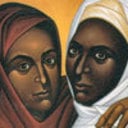 Early Christian MartyrsRead More
Early Christian MartyrsRead More
Martyrs at Carthage, March 7 203, together with three companions, Revocatus, Saturus, and Saturninus. The details of their martyrdom in the North African Church have reached us through a genuine, contemporary description ancient times. -
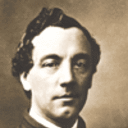 President of Georgetown UniversityRead More
President of Georgetown UniversityRead More
Patrick, as he was known, was born into slavery in Macon, Georgia, to the Irish-American plantation owner Michael Healy and his bi-racial slave Mary Eliza. Because of the law of slavery that children took the status of the mother, by the principle of partus sequitur ventrum, Patrick and his siblings were legally considered slaves, although they were three-quarters or more European in ancestry. Patrick was the third son of Mary Eliza and Michael Morris Healy, who had joined in a common-law marriage in 1829. After Patrick's father Michael bought his mother Mary Eliza, he fell in love with her and made her his common-law wife. -
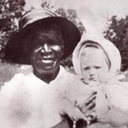 LaywomanRead More
LaywomanRead More
Denver's Angel of Charity was born into slavery, at Hannibal, Missouri, between 1833 and 1848. As a young child, Julia's right eye was destroyed by a cruel slavemaster's whip. Freed by the Emancipation Proclamation in 1863, Julia subsequently earned her keep by serving white families in Missouri, Colorado, Wyoming and New Mexico—though mostly in the Denver area. Whatever she could spare, Julia spent assisting poor families in her neighborhood. -
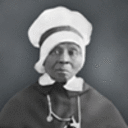 Foundress, Oblate Sisters of ProvidenceRead More
Foundress, Oblate Sisters of ProvidenceRead More
In 1828 Elizabeth Lange (later Mother Mary Lange) and Maria Balas accepted the invitation of Father James Hector Nicholas Joubert, SS, a Sulpician priest to start a sisterhood with the primary mission of teaching and caring for African American children. After adding two more women, Rosine Boegue and American-born Theresa Duchemin, they began studying to become sisters and opened a Catholic school for girls in their convent at 5 St. Mary's Ct. in Baltimore. Thus began St. Frances Academy. It is the oldest continuously operating school for black Catholic children in the United States and is still educating children in Baltimore. -
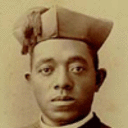 Parish Priest, Canonization in ProcessRead More
Parish Priest, Canonization in ProcessRead More
April 24, 1886, Holy Saturday, the day of Augustus Tolton's ordination to the priesthood dawned. Pope Leo XIII delegated Cardinal Giovanni Parocchi to officiate at the ceremony. St. John Lateran Basilica had seen many centuries of ordinations. The names of the candidates were called, one by one. "Augustus Tolton!" The black man from St. Peter Church in Quincy, Illinois, U.S.A responded, "Adsum" meaning "Present." Augustus stepped forward. -
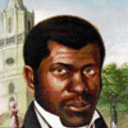 LaymanRead More
LaymanRead More
The Venerable Pierre Toussaint was a former slave from the French colony of Saint-Domingue who was brought to New York City by his owners in 1787. There he eventually gained his freedom and became a noted philanthropist to the poor of the city. Freed in 1807, after the death of his mistress, Pierre took the surname Toussaint in honor of the hero of the Haitian Revolution which established that nation. After his marriage in 1811, Toussaint and his wife performed many charitable works, opening their home as an orphanage, employment bureau, and a refuge for travelers. -
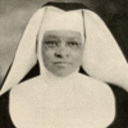 Foundress, Franciscan Handmaids of the Most Pure Heart of MaryRead More
Foundress, Franciscan Handmaids of the Most Pure Heart of MaryRead More
In October 1916, Theodore Williams received the habit and took the name Mother Mary Theodore. Her prayer was answered. The new Congregation, The Handmaids of the Most Pure Heart of Mary, was established. This title was chosen with the idea that members would “serve one another and those committed to their care with the same care, diligence, zeal, and love as Our Blessed Lady served her Divine Son." Over the next seven years, the Handmaids faced extreme poverty, racial and religious discrimination, and scarcity of numbers.
See More
